Km 4190-4710. Trelew-Comodoro Rivadavia-Caleta Olivia
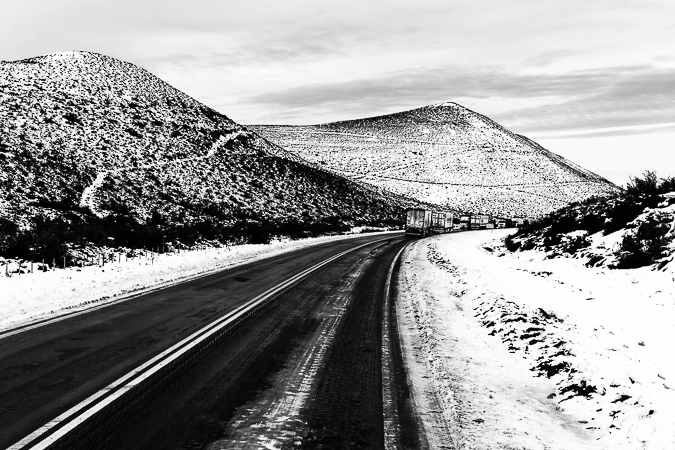 National Route 3. Chubut. 2017 © Leo Micieli
National Route 3. Chubut. 2017 © Leo Micieli
Km 4190-4710. Trelew-Comodoro Rivadavia-Caleta Olivia. August 18th, 2017.
A big storm affects most of the Patagonian territory on the days of June. The satellite map shows a huge white mantle covering almost the whole region, just a few strips remain relatively safe from the snow, but not from the ice, the rain, the roadblocks. In some places it happens all at once, and more. There are floods, destroyed houses, collapse of public services. Winter comes early and imposes over the usual cold of this area. The last precedent of a storm like this is from several decades ago. It's doubtful if continuing with the trip or not. However, the trip continues on. Of course it does, all trips are only one-way.
The further South, space and time seem to stretch, everything become slow and distances get longer, even more than usual. Physics hasn't altered its laws, but that's the impression. The perception of the things, and not their nature, is relative as the number of people in the World.
This stage will be harsher, more uncomfortable, though with the selfless aid of others in every moment. The features of geography and people get more accurate, features which are as opposing as complementary, and that are so necessary in this Terra Patagonia.
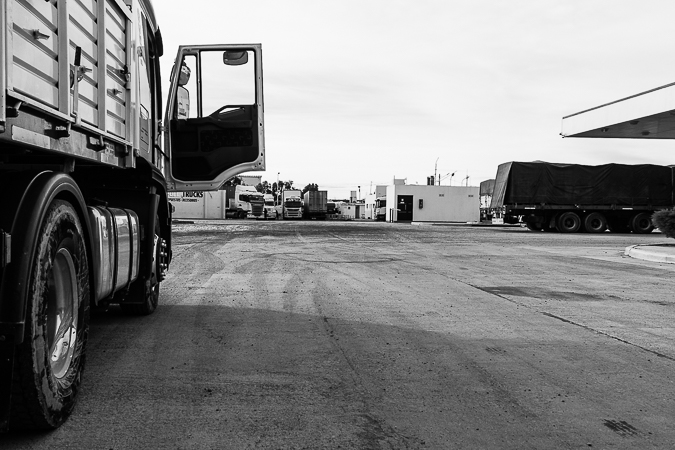 YPF Gas Station. Trelew, Chubut. 2017 © Leo Micieli
YPF Gas Station. Trelew, Chubut. 2017 © Leo Micieli
It's 60 km from Puerto Madryn to Trelew, an unusual and short distance in Patagonian terms, along a road in perfect conditions. It takes less than half an hour to cover it from one gas station to the other one, without any problem. There are not much traces of the storm here, but it will not take long to find them. It's 400 km to Comodoro Rivadavia; enough road to know what happened.
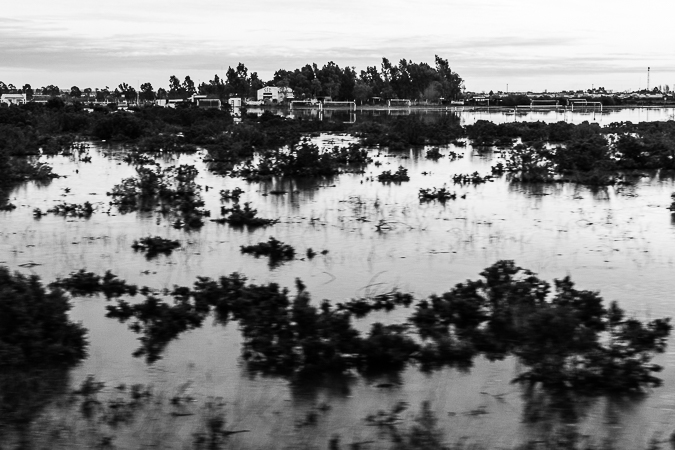 Trelew, Chubut. 2017 © Leo Micieli
Trelew, Chubut. 2017 © Leo Micieli
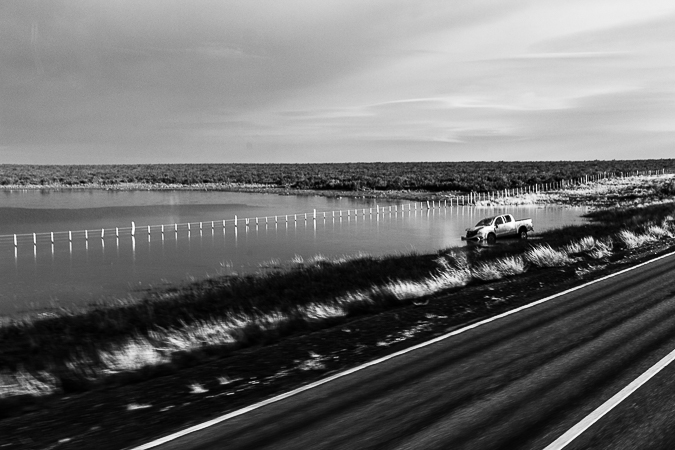 National Route 3. Chubut. 2017 © Leo Micieli
National Route 3. Chubut. 2017 © Leo Micieli
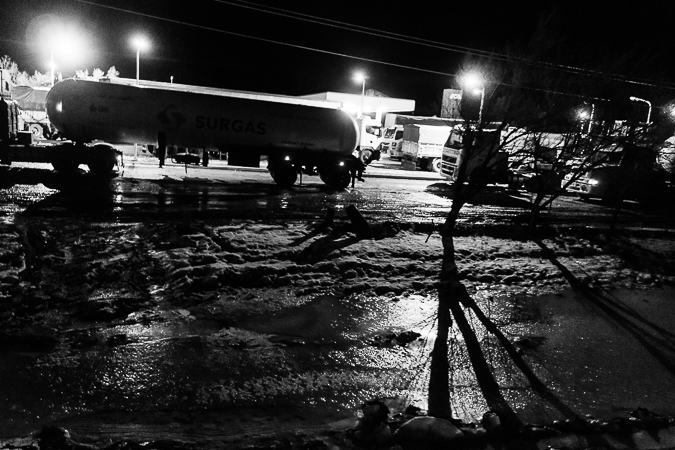 Garayalde. Chubut. 2017 © Leo Micieli
Garayalde. Chubut. 2017 © Leo Micieli
Apparently the journey will be long. The ice on the asphalt complicates the traffic. It's common to see all kind of vehicles at the side of the road, overturned, crashed, abandoned until someone take them away. Speed decreases in this conditions, but after Garayalde it's necessary to stop to 0 km/h and wait until the thin line of trucks moves along from time to time, sometimes no more than ten or twenty meters. The journey, and also the night, will be very long.
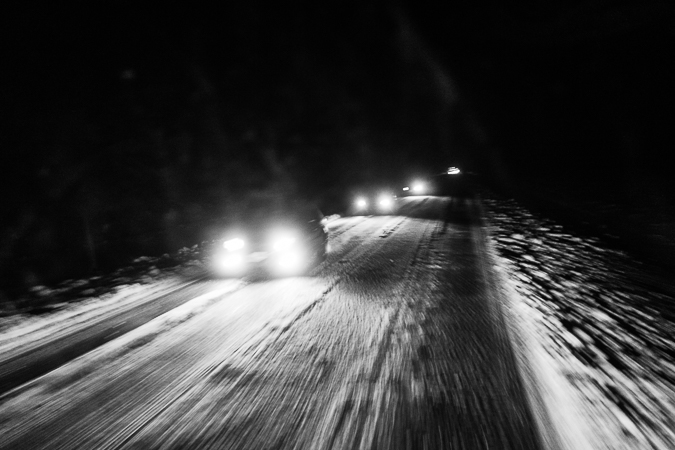 National Route 3. Chubut. 2017 © Leo Micieli
National Route 3. Chubut. 2017 © Leo Micieli
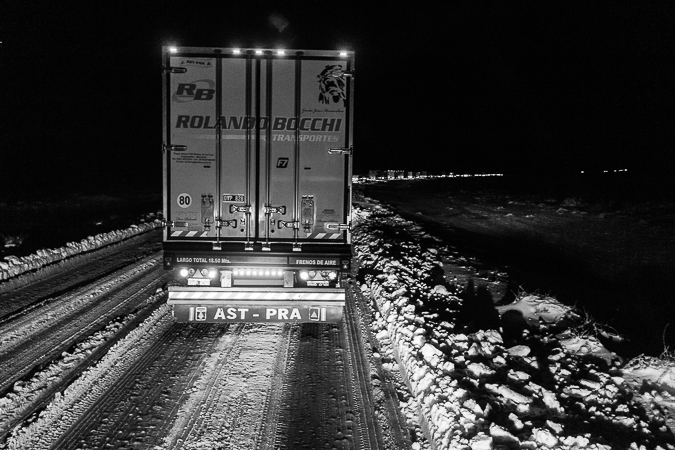 National Route 3. Chubut. 2017 © Leo Micieli
National Route 3. Chubut. 2017 © Leo Micieli
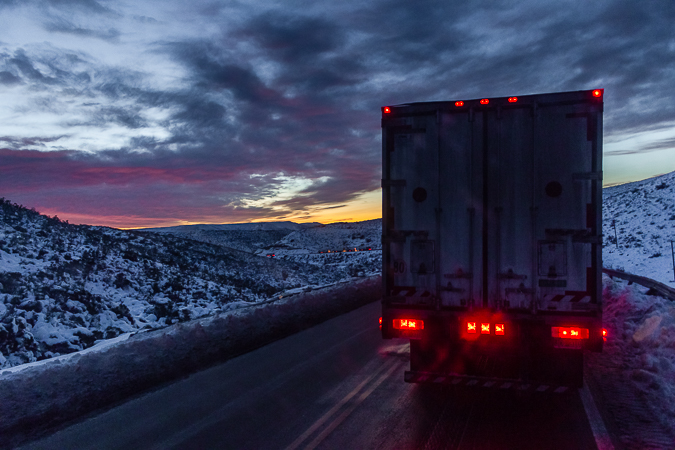 Ferrays Canyon, Chubut. 2017 © Leo Micieli
Ferrays Canyon, Chubut. 2017 © Leo Micieli
After several hours to the dawn we haven't arrived to Comodoro Rivadavia yet. It's near, maybe at 20 km, but in the slope of the Ferrays Canyon there's too much ice on the road and vehicles must circulate with extreme precaution in addition to snow chains. Due to the altitude and winds this place tends to produce icing conditions, something that frequently causes severe accidents.
Over the iced tracks of the road pass the trucks' wheels, but they slip, go from side to side, it's hard to recover the way. They move forward very slowly, looks like they will fall down in any moment. In cities and towns people awaits for their relatives and the cargo brought by trucks, but they can't, they're a too many and so are the troubles.
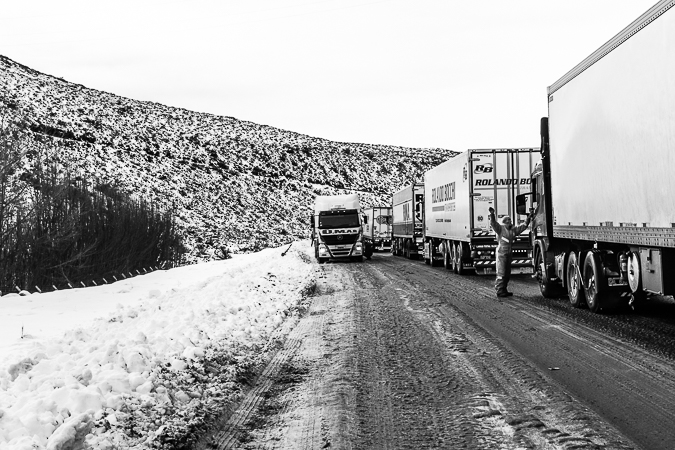 Ferrays Canyon, Chubut. 2017 © Leo Micieli
Ferrays Canyon, Chubut. 2017 © Leo Micieli
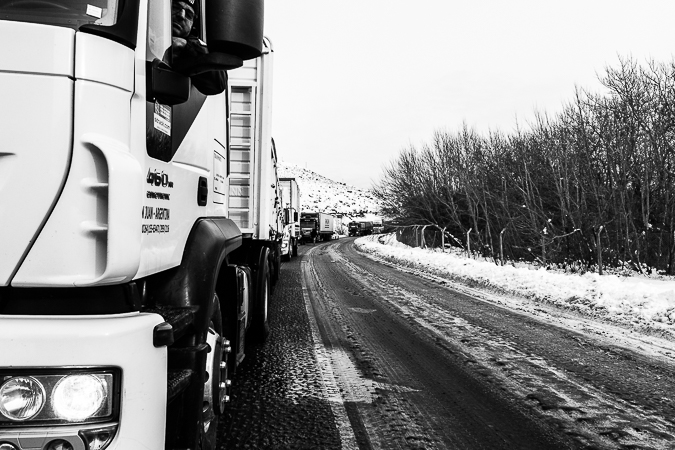 Ferrays Canyon, Chubut. 2017 © Leo Micieli
Ferrays Canyon, Chubut. 2017 © Leo Micieli
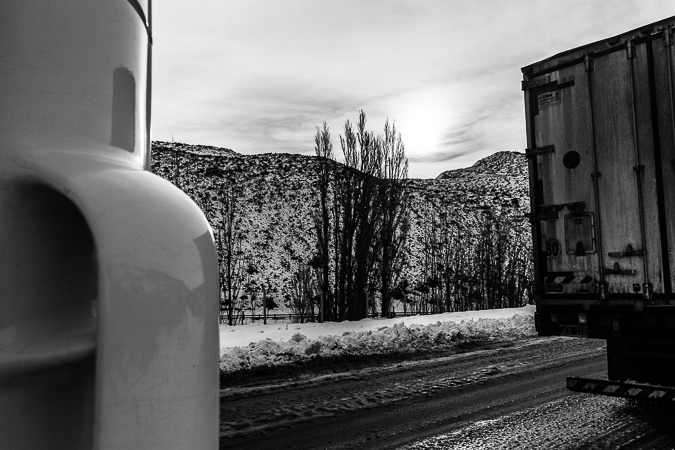 Ferrays Canyon, Chubut. 2017 © Leo Micieli
Ferrays Canyon, Chubut. 2017 © Leo Micieli
After the canyon everything change suddenly. Cold and rain still remain but snow and ice have gone, the traffic has normalized, there's a certain fluency. Entering Comodoro Rivadavia is, almost twenty hours after leaving Trelew, a kind of climatic oasis in this situation, which is an overstatement since this city is not very kind in terms of weather. Yet, it's just an illusion. The catastrophe has fallen few months ago leaving a flood over the city after intense rains, widely higher than the average. The aftermaths are noted on the streets and sidewalks, still covered by mud, destroyed houses and wreckage, metal sheets and poles all over the place. In the middle 90's something similar happened: the Chenque Hill became a slope in which water poured down. Some preventive works were made on the hill a time ago. A geologist affirms that due to those works the city has been saved from bigger consequences. Nowadays the Patagonian storm threats again from the skies of Comodoro Rivadavia.
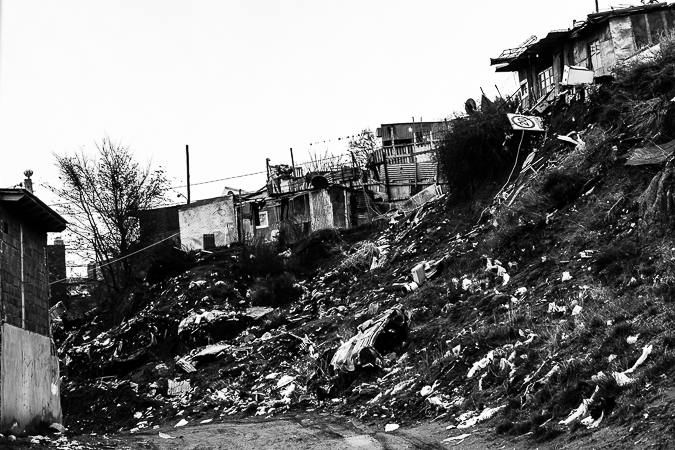 Comodoro Rivadavia, Chubut. 2017 © Leo Micieli
Comodoro Rivadavia, Chubut. 2017 © Leo Micieli
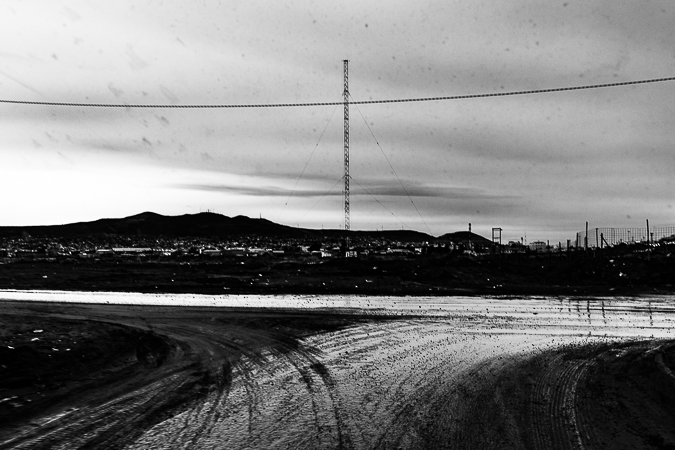 Comodoro Rivadavia, Chubut. 2017 © Leo Micieli
Comodoro Rivadavia, Chubut. 2017 © Leo Micieli
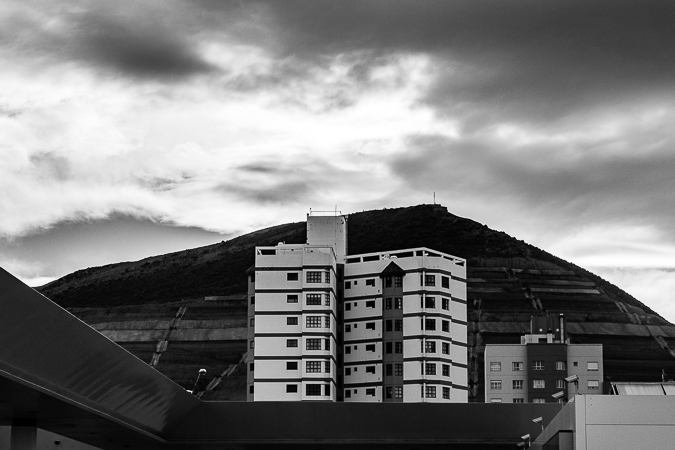 Chenque Hill. Comodoro Rivadavia, Chubut. 2017 © Leo Micieli
Chenque Hill. Comodoro Rivadavia, Chubut. 2017 © Leo Micieli
The city can't give its better version at this moment. For a long time public services are in delicate situation, there's too much left to rebuild and it will be necessary to wait until a warmer season in order to get a better idea of the real importance of this place.
Oil National Capital (off the record, it might also be Wind National Capital), multi-exporter port, most populated city of Patagonia, more than interesting and enough features to consider how transcendent this city is in Argentina. Yet it's possible to perceive some of its harsh beauty, a rich and surly lady, run-down nowadays.
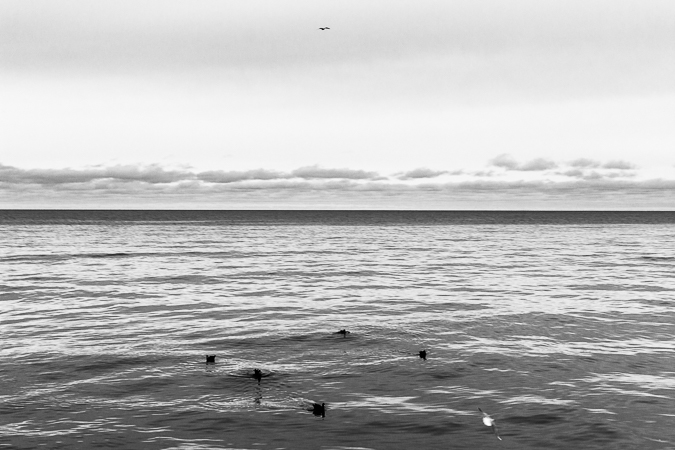 Comodoro Rivadavia, Chubut. 2017 © Leo Micieli
Comodoro Rivadavia, Chubut. 2017 © Leo Micieli
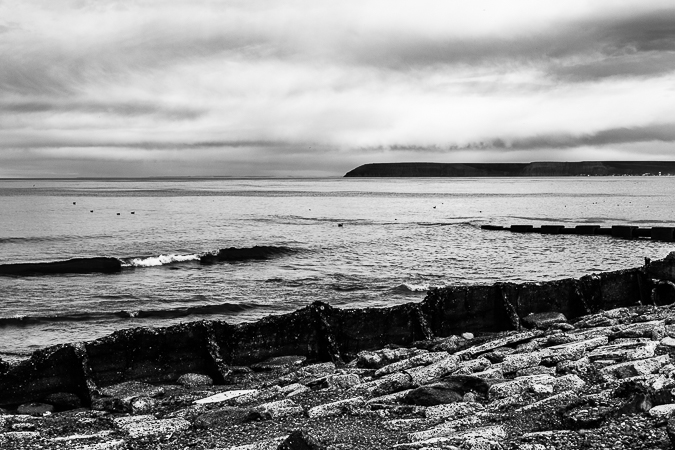 Comodoro Rivadavia, Chubut. 2017 © Leo Micieli
Comodoro Rivadavia, Chubut. 2017 © Leo Micieli
After three days in this city I decide to go to the next one also in Route 3. I'm trying to escape from the storm without knowing how, since weather has no borders, and next destination is Caleta Olivia in the province of Santa Cruz, at about 80 km. In such a short distance there's no way to get away from the climatic ambush, but at least I trust on the element of surprise which might save me and that has already saved me many times before.
I share the journey with a very funny guy from Tucumán and another one, a Siberian. This might be part of an anecdote but it's to mention what kind of things can happen in Patagonian roads, and from where come people to visit and live here.
The road in this part is placed just a few meters from the coast, so at one side there are tablelands and desert, and at the other the cold sea that hits the shore. Sun comes up, the rays pass through the clouds and it's felt the warm in the face. It's another climatic oasis that will be short. I know that rain and wind will hit the place tonight.
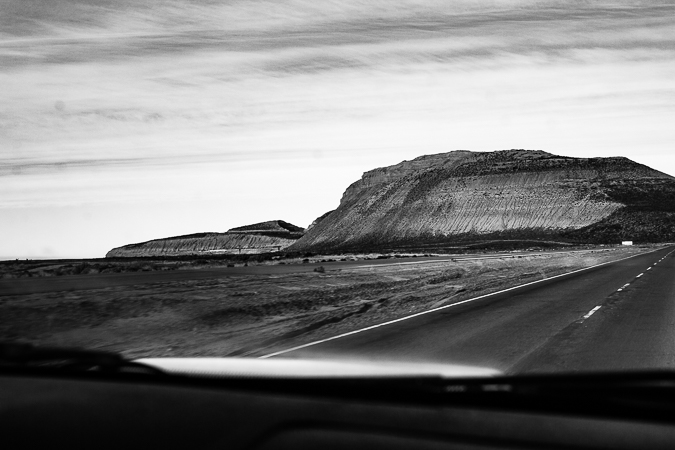 National Route 3. Chubut. 2017 © Leo Micieli
National Route 3. Chubut. 2017 © Leo Micieli
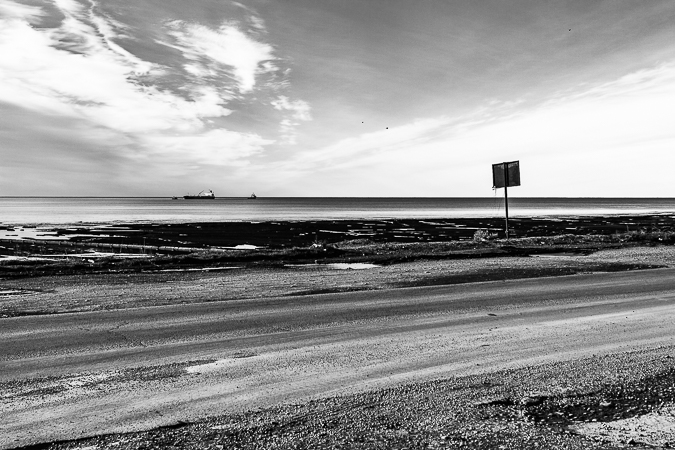 Caleta Olivia, Santa Cruz. 2017 © Leo Micieli
Caleta Olivia, Santa Cruz. 2017 © Leo Micieli
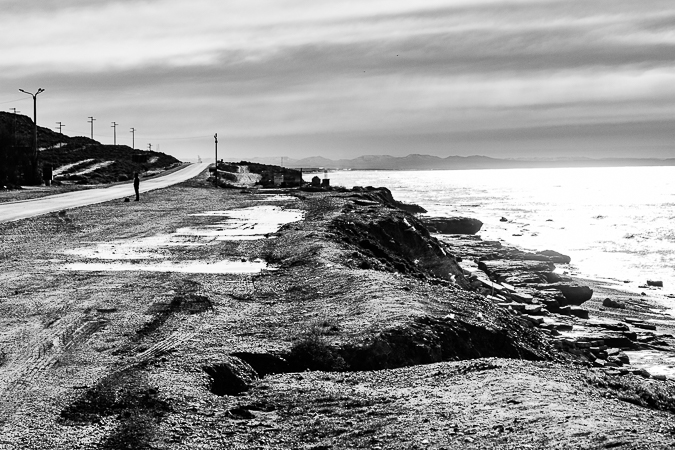 Caleta Olivia, Santa Cruz. 2017 © Leo Micieli
Caleta Olivia, Santa Cruz. 2017 © Leo Micieli
In just a few hours I must solve where to stay, in which conditions, and other things. Rain, cold and wind always threat, though this time with a forewarning. This way I don't realize that I'm visiting a new province on this trip. The entrance is a bit hard, but as usual, people help in ways beyond the imagination. A family from Mendoza who is living in Caleta Olivia welcome me in their home, and from now the likely two or three days I would spend here will become in several weeks. It's not a city that invites to stay long, but such a hospitality is more than enough for doing it.
Anyway, weather is used to imposing and not waiting nor understanding of friendships, so there's short time left to find a place until the pouring rain falls in the night.
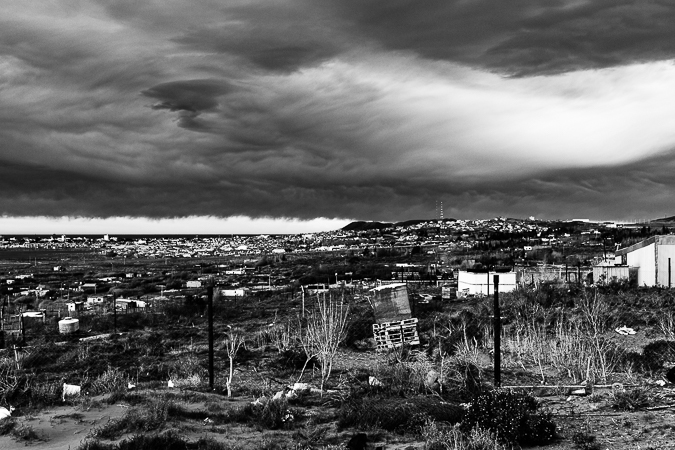 Caleta Olivia, Santa Cruz. 2017 © Leo Micieli
Caleta Olivia, Santa Cruz. 2017 © Leo Micieli
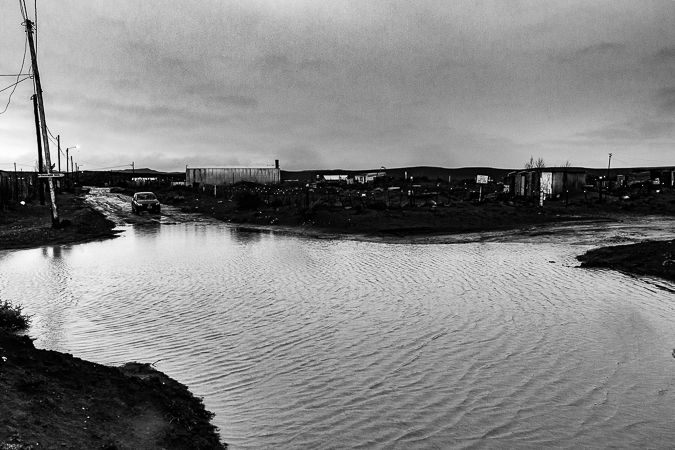 Caleta Olivia, Santa Cruz. 2017 © Leo Micieli
Caleta Olivia, Santa Cruz. 2017 © Leo Micieli
 Caleta Olivia, Santa Cruz. 2017 © Leo Micieli
Caleta Olivia, Santa Cruz. 2017 © Leo Micieli
It's necessary to consider many factors and general conditions of the area in where I am now that increase the effects after the rain, and are less intense in downtown. The area is called Zona de Chacras (Farm Area) and its name depictes the characteristics. It's at certain distance from the city itself, enoughly close to go by car in less than ten minutes and too much far away by foot as there are puddles, wet and slippery gravel, sand and dogs, several of them by each inhabitant. And most of them are very grumpy, no matter their race and size.
Conditions are not better with better weather. Lack of water (like other parts of the province, something that I will confirm later) which is very contaminated, strong winds that strains the sand in every little place, no stores or markets in which buying groceries and supplies.
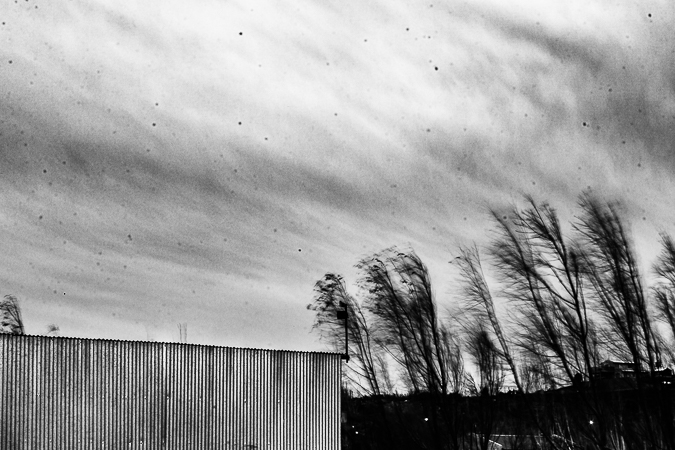 Caleta Olivia, Santa Cruz. 2017 © Leo Micieli
Caleta Olivia, Santa Cruz. 2017 © Leo Micieli
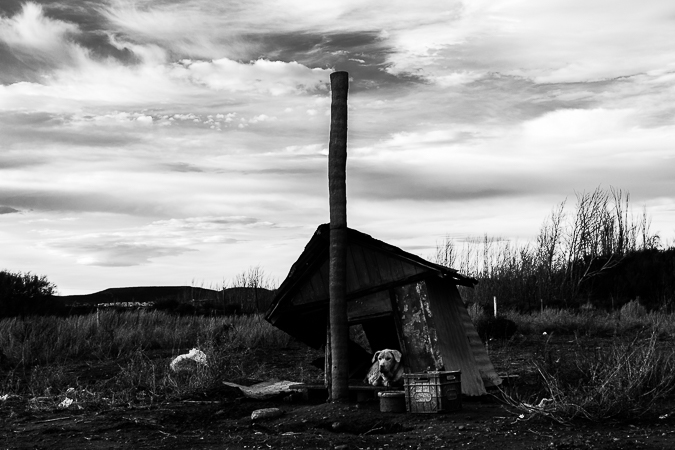 Caleta Olivia, Santa Cruz. 2017 © Leo Micieli
Caleta Olivia, Santa Cruz. 2017 © Leo Micieli
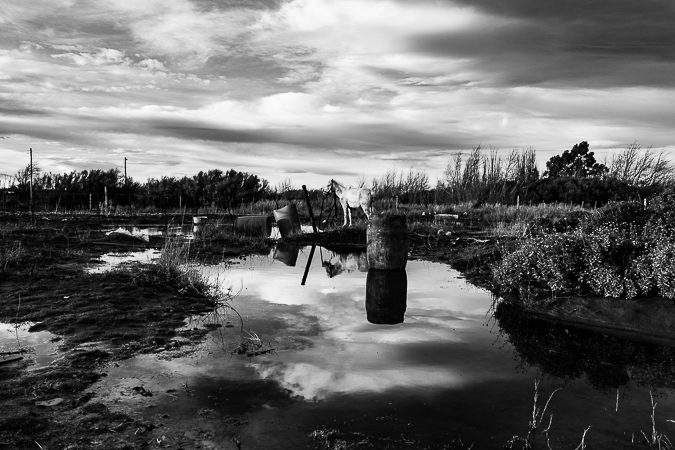 Caleta Olivia, Santa Cruz. 2017 © Leo Micieli
Caleta Olivia, Santa Cruz. 2017 © Leo Micieli
Days pass by calmly in this farm area. The silence is only interrupted by barks and gusts, and some trucks. In downtown the rhythm is different, of course, but there's calm too.
This oil city has increased its population in the last years. Work reasons made many people to migrate to this place that promised wellbeing not only in the oil field but also in all the activities around the abundant money that came up from the oil wells. This situation has changed lately. As usual, especially in cities like this one so dependant on oil, troubles are caused by politics combined with dark interests around the "black gold" and its deliberate comings and goings, something that population always has to suffer due to its vulnerability.
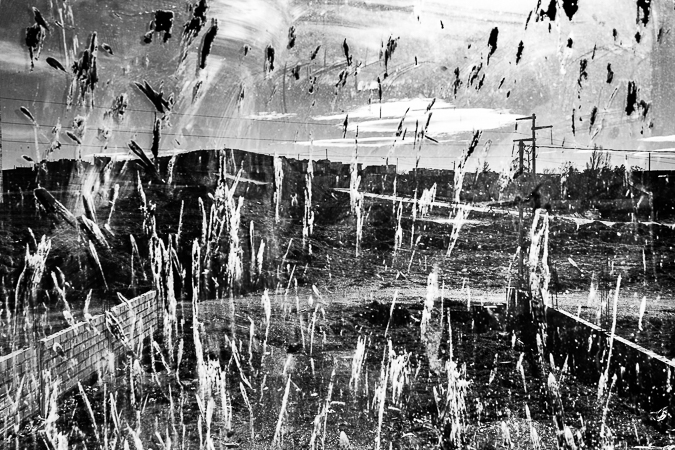 Caleta Olivia, Santa Cruz. 2017 © Leo Micieli
Caleta Olivia, Santa Cruz. 2017 © Leo Micieli
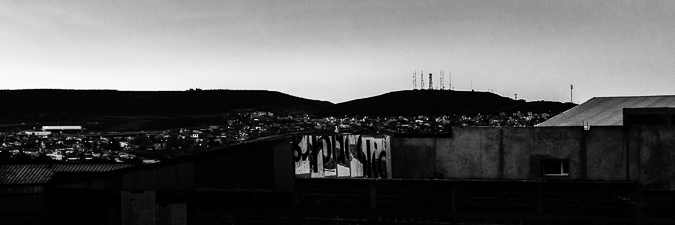 Caleta Olivia, Santa Cruz. 2017 © Leo Micieli
Caleta Olivia, Santa Cruz. 2017 © Leo Micieli
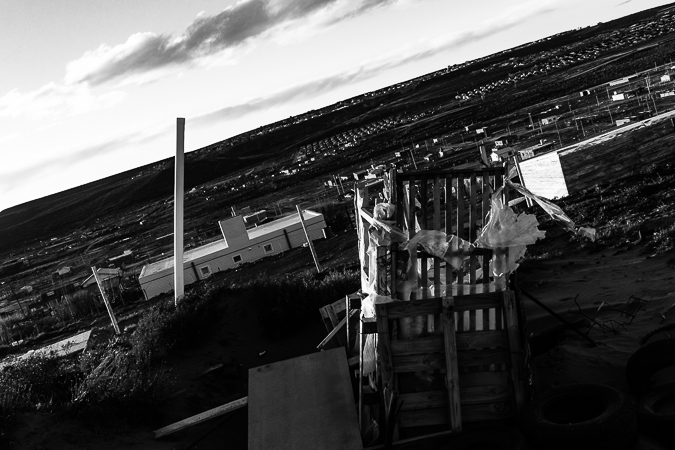 Caleta Olivia, Santa Cruz. 2017 © Leo Micieli
Caleta Olivia, Santa Cruz. 2017 © Leo Micieli
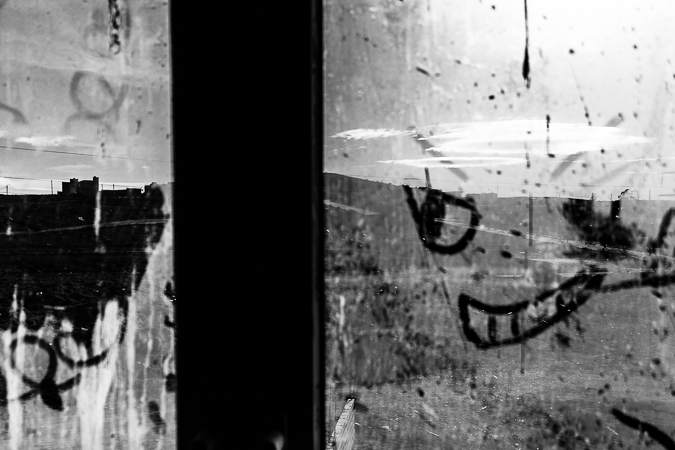 Caleta Olivia, Santa Cruz. 2017 © Leo Micieli
Caleta Olivia, Santa Cruz. 2017 © Leo Micieli
The particular features of this city give the impression of a untapped potential, wasted in some way. There's a gap, things that don't fit too much and don't take any form. It gives the impression that there's a lot left to build, literally and simbolically talking, although the mood seems not to be the right among the people.
Many reasons converge in the behavior of any society: geographic, historic, current and past issues, trends, activities and a high dose of politics. As the saying goes, the house always win.
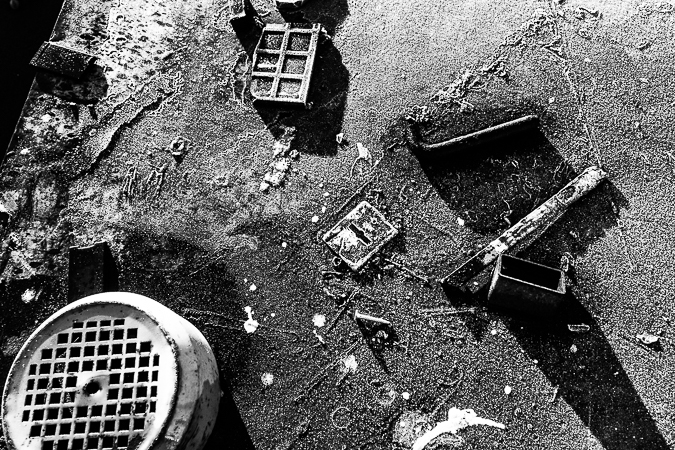 Caleta Olivia, Santa Cruz. 2017 © Leo Micieli
Caleta Olivia, Santa Cruz. 2017 © Leo Micieli
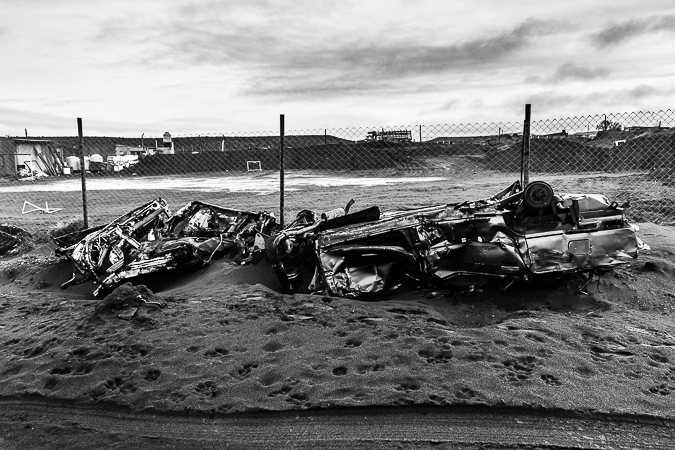 Caleta Olivia, Santa Cruz. 2017 © Leo Micieli
Caleta Olivia, Santa Cruz. 2017 © Leo Micieli
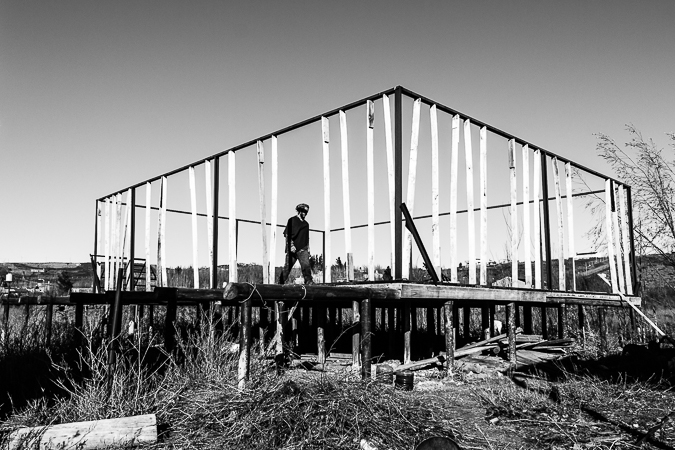 Caleta Olivia, Santa Cruz. 2017 © Leo Micieli
Caleta Olivia, Santa Cruz. 2017 © Leo Micieli
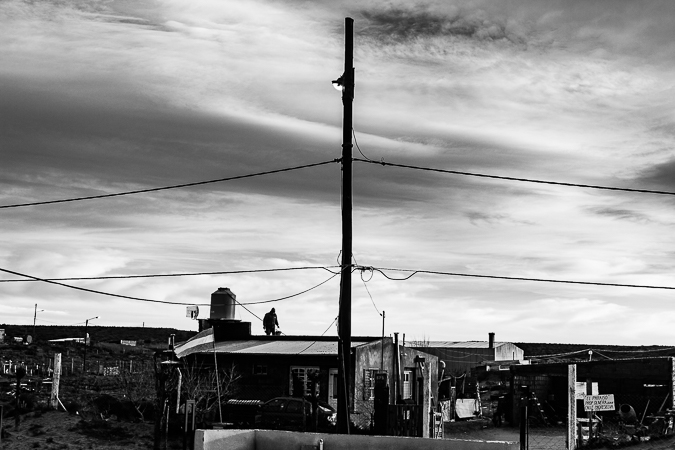 Caleta Olivia, Santa Cruz. 2017 © Leo Micieli
Caleta Olivia, Santa Cruz. 2017 © Leo Micieli
In spite of the mood that this post might have, the feeling is a profound optimism on this stage, not despite the climatic and social avatars but because of them. The goal of this trip is not to visit beautiful and poetic places, nor to give a partial impression of this land, not to make a tourist guide for travelers. There's much more than all of that, there's what cannot be find in comfort conditions, something that comes up only when the skin is in touch with harshness. Geographic beauty and traveling are part of this, of course, but they are not its axis. The center is made of experiences, journeys, every moment, with every thing that comes in the road. There's always something better waiting after all of that. The balance is found in people's attitude, in solidarity, something that has been constant along the 5000 km of this trip, whatever they are the places and conditions.
The sun shows its colors. The storm has gone, next journeys bring on better weather, and friends, experiences and aids that I received are treasure forever.
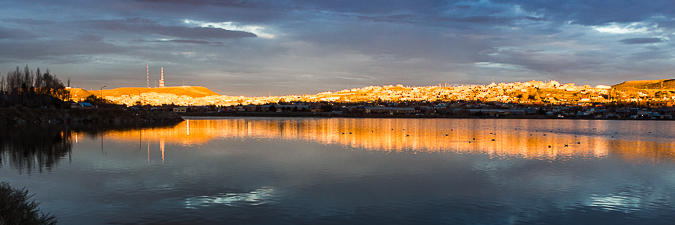 Caleta Olivia, Santa Cruz. 2017 © Leo Micieli
Caleta Olivia, Santa Cruz. 2017 © Leo Micieli
Km 30-100 - First impressions in Patagonian Coast
Km 100-410 - The sea
Km 410-3650 - 'Stop, look, listen'. (Part 1/2)
Km 410-3650 - 'Stop, look, listen'. (Part 2/2)
Km 3650-4190. Puerto Madryn - Puerto Pirámides - Bird Island
Km 4190-4710. Trelew-Comodoro Rivadavia-Caleta Olivia
Km 4710-5750. Coast of Santa Cruz. (Part 1/2)
Km 4710-5750. Coast of Santa Cruz. (Part 2/2)
Km 5750-6960. Tierra del Fuego
Km 6960-8800. West of Santa Cruz.
Km 8800-9670. San Jorge Gulf Basin.
Leave a Reply